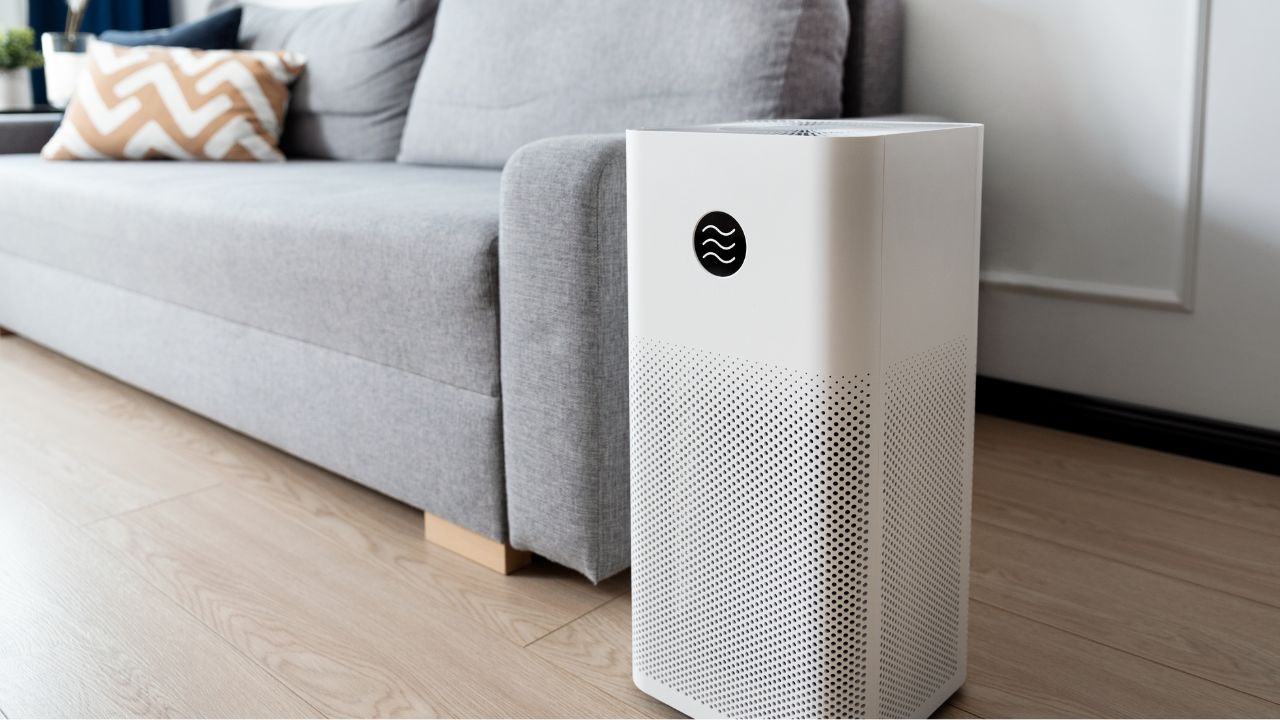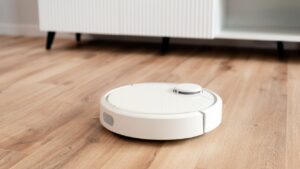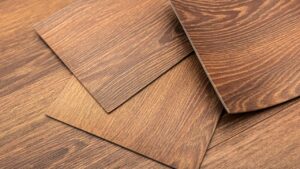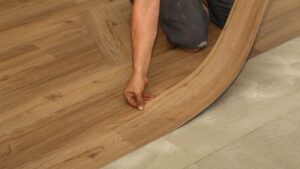That smell of smoke drifting through the window during haze season. The stuffy, stale feeling in a bedroom that’s been closed up all day.
An air purifier seems like the obvious solution, but it often leads to more confusion. With so many options out there, how do you pick the right one for our unique Singaporean environment?
Why Do You Even Need an Air Purifier in Singapore?
You might be thinking, “Is it really necessary?” While Singapore generally has good air quality, there are a few reasons an air purifier can be a wise investment:
- Haze Season: During haze, the tiny particulate matter (PM2.5) can reach unhealthy levels, affecting respiratory health.
- Allergies & Asthma: Dust mites, pollen (even in a tropical climate!), pet dander, and mold spores can trigger allergies and asthma. An air purifier helps filter these out.
- Urban Pollution: Even without haze, living in a bustling city means exposure to car exhaust, industrial emissions, and construction dust.
- Indoor Pollutants: Your own home can have indoor pollutants from cooking, cleaning products, furniture, and even certain building materials.
- House Dust Mites: They flourish in the humidity, colonizing mattresses, bedding, upholstered furniture, and carpets.
- Mold Spores: Damp spots in bathrooms, kitchens, and poorly ventilated areas are perfect for mold growth. Spores can trigger allergic reactions and respiratory issues.
- Pet Owners: If you have furry friends, an air purifier can significantly reduce pet dander and odors.
The Key Air Purifier Features To Look For
1) HEPA Filter
HEPA stands for High-Efficiency Particulate Air. This is the gold standard for trapping tiny particles like dust, pollen, pet dander, mold spores, and most importantly for Singapore, PM2.5 haze particles.
Why it’s important for Singapore: A true HEPA filter captures 99.97% of particles 0.3 microns in size. This is crucial for dealing with haze and common allergens.
Make sure the air purifier specifies “True HEPA,” not “HEPA-type” or “HEPA-like,” which are less effective.
For Singapore’s air quality issues, a True HEPA filter is non-negotiable. It is the gold standard for capturing:
- PM2.5 particles from haze and traffic pollution.
- House dust mite allergens.
- Pet dander and mold spores.
2) Activated Carbon Filter
A HEPA filter is a master at capturing solid particles, but it is completely ineffective against gases, chemicals, and odours. This is where the second critical component comes in: the activated carbon filter.
The activated carbon filter uses activated carbon (or activated charcoal) to absorb gases, odors, and Volatile Organic Compounds (VOCs) like those found in smoke, cooking smells, cleaning products, and even new furniture.
Why it’s important for Singapore: Great for removing cooking smells in your HDB flat, pet odors, and those occasional outdoor chemical smells. It’s also vital for tackling VOCs which can be emitted by many common household items.
In the context of a Singaporean home, an activated carbon filter is essential for removing:
- Volatile Organic Compounds (VOCs): These are chemicals released from new furniture, paint and cleaning products.
- Cooking Smells and Odours: It effectively neutralizes smells from cooking, pets, and mildew.
- Harmful Gases: It traps the gaseous components of vehicle exhaust and transboundary haze, such as nitrogen dioxide and sulphur dioxide
While “True HEPA” is a verifiable standard, the quality of carbon filters varies dramatically. Many cheaper purifiers use a thin, flimsy mesh that is merely sprayed with a small amount of carbon. These are largely ineffective and become saturated very quickly.
A high-quality purifier will feature a thick filter containing a significant weight of granular activated carbon.
3) CADR (Clean Air Delivery Rate)
CADR tells you how quickly the purifier cleans a room of specific pollutants (dust, pollen, smoke). In simple terms, CADR (Clean Air Delivery Rate) measures the volume of clean, filtered air that a purifier delivers per minute or per hour. A higher CADR means faster cleaning.
Match the CADR to your room size. Look for air purifiers that specify the recommended room size in square feet or square meters. A small purifier for a large living room won’t be effective.
The Quick Estimate (AHAM’s 2/3 Rule): Your purifier’s Smoke CADR (in CFM) should be at least two-thirds of your room’s area in square feet. For a 150 sq ft bedroom, you’d need a Smoke CADR of at least 100 CFM (cubic feet per minute)
If you need help converting m3/h to CFM, you can use this online converter.
Simple CADR Guide For Typical Singapore Homes
| Room Type | Typical Area (sq m) | Typical Area (sq ft) | Minimum Recommended CADR (CFM) |
| HDB Small Bedroom | ~10 sqm | ~107 sq ft | 70 CFM |
| HDB Master Bedroom | ~12 sqm | ~129 sq ft | 85 CFM |
| Condo Master Bedroom | ~15 sqm | ~161 sq ft | 105 CFM |
| HDB 4-Room Living Room | ~25-30 sqm | ~290 sq ft | 190 CFM |
| Condo Living Area | ~30-35 sqm | ~350 sq ft | 225 CFM |
| HDB 5-Room Living/Dining | ~35-40 sqm | ~400 sq ft | 260 CFM |
4) Noise Level
Measured in decibels (dB). Air purifiers can be noisy, especially on higher settings.
Why it matters: If you’re putting it in a bedroom, you’ll want something very quiet (below 50 dB on its lowest setting is good, even lower is better). Some models have a “sleep mode” for ultra-quiet operation.
Here’s a simple guide to what decibel levels feel like :
- 20-30 dB: A soft whisper or rustling leaves. This is the ideal range for sleeping.
- 40-50 dB: A quiet library or the hum of a refrigerator. Noticeable, but generally not disruptive in a living room.
- 60+ dB: A normal conversation or a vacuum cleaner. This level is too loud for bedrooms and can be distracting in living spaces.
A purifier that is perfectly sized for your room might require you to run it on this high, noisy setting to be effective. The best solution is to purchase a purifier that is oversized for your room. This allows you to run it on a lower, much quieter fan speed while still achieving the necessary air cleaning performance.
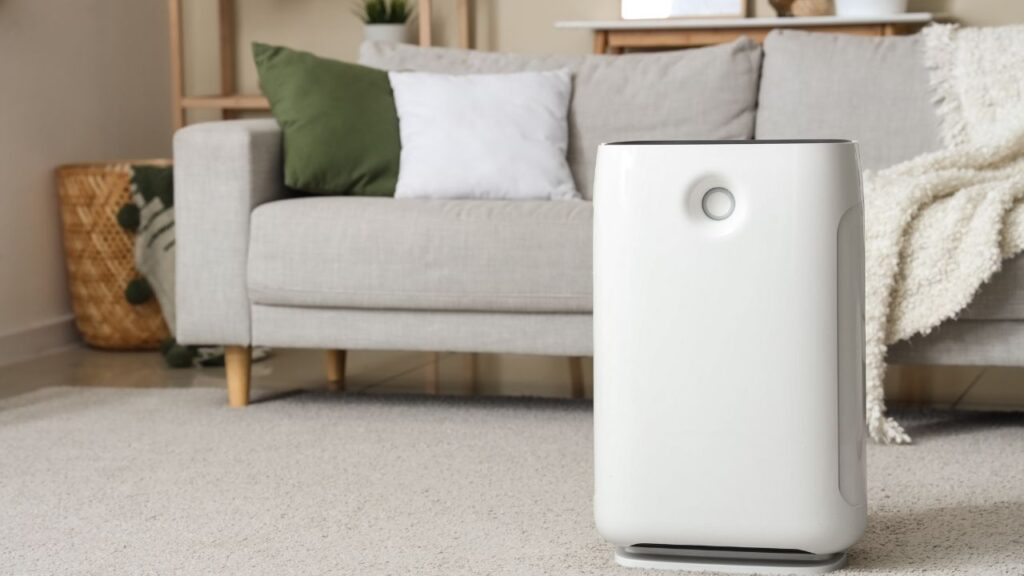
5) Smart Features & Extras
Air Quality Sensor & Auto Mode: Many modern purifiers have sensors that detect pollution levels and automatically adjust fan speed.
However, the built-in sensors are often not very accurate and can provide a false sense of security. The sensor is located on the unit itself, measuring the air right next to the clean air outlet: the cleanest spot in the entire room.
Auto Mode is a useful feature for general, everyday use. However, during a severe haze episode or for managing acute allergies, it is more reliable to manually set the purifier to a constant, appropriate speed to ensure continuous and effective air circulation.
Smart Home Connectivity (Wi-Fi & Apps)
A growing number of purifiers offer Wi-Fi connectivity and a companion smartphone app. These smart features can significantly enhance the user experience by allowing you to :
- Control Remotely: Turn the purifier on using your phone before you get home from work.
- Set Schedules: Program the unit to run at a high speed for an hour before bedtime and then switch to a quiet mode.
- Monitor Air Quality: View real-time and historical data on your home’s air quality on your phone.
- Track Filter Life: Receive precise notifications when it’s time to order and replace your filters.
Many smart purifiers also integrate with voice assistants like Amazon Alexa, Google Assistant, and Apple Siri/HomeKit, allowing for hands-free control.
UV-C Light: Some purifiers include UV-C light for killing bacteria and viruses. While some people prefer this, it’s not strictly necessary if you have good HEPA and carbon filters. Some studies suggest potential ozone production, so research this feature if considering.
Ionizer: Similar to UV-C, ionizers can help precipitate particles. However, some can produce ozone, which is an irritant. If you have respiratory sensitivities, you might want to avoid models with ionizers or ensure they have an “ozone-free” certification.
6) Filter Replacement Costs & Hidden Expense
Air purifier filters need to be replaced periodically and these costs can add up! Check the price of replacement filters before you buy the unit itself. Also, make sure the filters are readily available in Singapore
Based on Singapore’s high humidity and potential for high-pollution events, a realistic replacement schedule is crucial:
True HEPA Filters
Typically need replacement every 6 to 12 months.
Activated Carbon Filters
These often become saturated with odours and gases more quickly and may need to be replaced every 3 to 6 months for optimal performance.
Pre-filters
These capture larger particles like hair and dust. Many are washable and should be cleaned every month to extend the life of the more expensive main filters.
The cost of replacement filters can range from $30 to over $100 per set, depending on the brand and complexity. It is wise to budget an average of $80 to $200 per year for filter replacements for each purifier.
Where to Buy in Singapore?
You’ll find air purifiers at major electronics stores like Harvey Norman, Courts, Best Denki, and Gain City. Online retailers like Lazada and Shopee also offer a vast selection. Remember to compare prices and go through the reviews!
Conclusion
Investing in an air purifier is a great step towards creating a healthier and more comfortable home environment. By focusing on the key features like True HEPA and activated carbon filters, matching the CADR to your room size, and considering filter costs, you’ll be well on your way to breathing clean, and fresh air.

